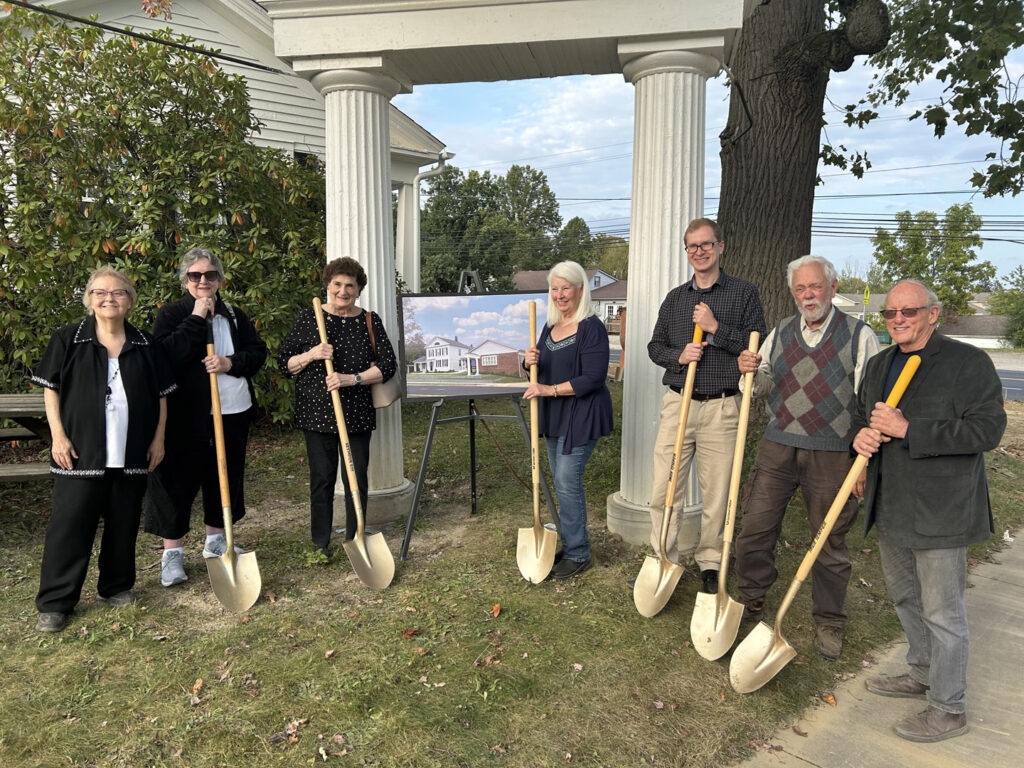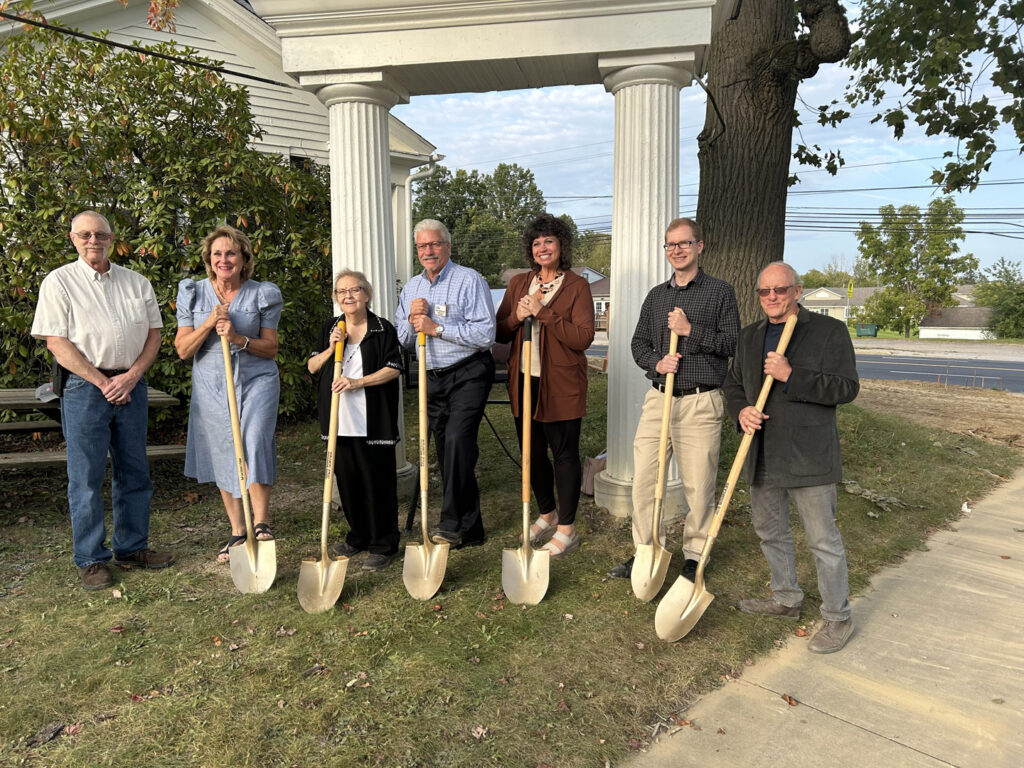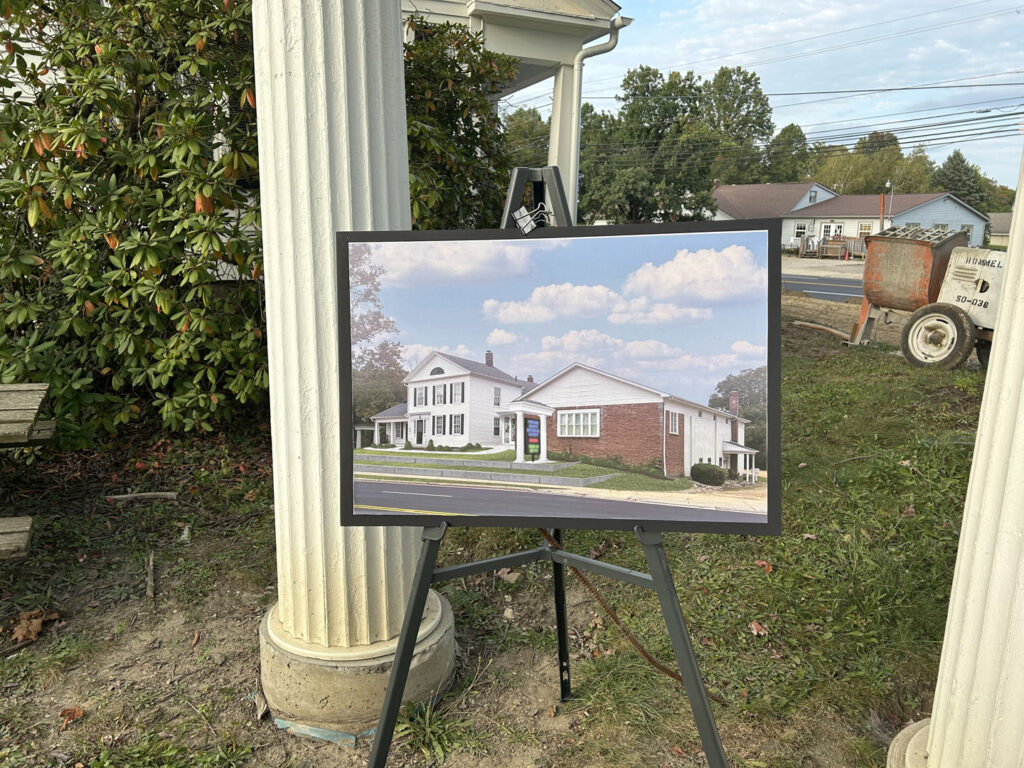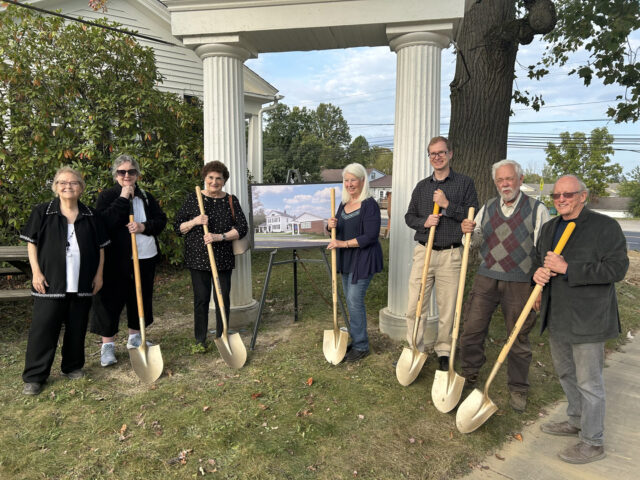The Ravenna Historical Society convened on Sep. 20 to officially announce its groundbreaking for Phase Two of its six-phase restoration project.
The meeting was led by Deborah Sunderland, President of the Historical Society, and Eric Hummell, president and owner of Hummel Construction. Also in attendance were members of the Ravenna Township Trustees and County Commissioners.
Hummel Construction had already broken ground because of the work previously done in Phase One of the project, consisting of restoration of the foundation and installation of a new sewage system.
Sunderland and Hummel credited Ohio State Representative Gail Pavliga, who was in the audience, for her efforts in helping successfully secure a grant of $625,000 from the State of Ohio to implement the next phase of a six-phase restoration project.
“I am happy to be here today to celebrate and continue to see the historical society expand and restore and draw the community in,” Pavliga said.
The Historical Society’s restoration project is already in full effect, having completed Phase One with a $100,000 grant that began with Hummel Construction digging into the foundation.
“Most of the jobs, we have a set of plans that we bid on and we do them but here I got called in to help with a vision and scope, getting designers, planners, engineers and talking to people to see what we were going to do,” Hummel said.
After starting the work on the foundation, Hummel said they discovered it was built in a way he had never seen before.
“Instead of digging an excavation and building a wall from both sides, we dug an excavation and found rocks in it,” he said. “It was just a pile of rocks. When we came inside, there was a little bit of mortar evident but when we dug around the pile, the rocks actuall actually fell out so they had to be remortared to make a wall.”
In addition to building a new foundation, and with some assistance from Mayor Frank Seman and the city engineer, a new sewer system was designed to be hooked up to city water to accommodate future development.
The new system has already been installed and the final step is waiting for the natural gas to be hooked up.
Hummel Construction has built the foundation for a compliant link between the Carter House and the Museum, removed dying maple trees and a deteriorating stone wall in front of the buildings, replacing footer drains and downspouts and regrading all areas in preparation of a new lawn.



Future plans for Phase Two include building a new street sidewalk to ensure safety of pedestrians and interior restorations involving removing items from the Carter House for storage, and updating the electrical, insulation and air conditioning of the Carter House.
According to Hummel, the plan is to finish Phase Two by the end of the year but the process of planning for Phase Three has already begun.
Sunderland said the historical society is planning on holding more fundraisers to raise the necessary funds to continue the project, which is expected to run through the next several years.
One key project that is still in the planning stage will be designing a digital sign to put in the front of the building. Sunderland said she expects installation cost for the sign to be in the range of $35,000 to $40,000.
“What we want to do is make sure the sign is seen from both sides of the traffic and let people know when we are open and what events are coming up and we can even say the school has a project and wants to use our sign,” she said. “It will be available for use of other groups.”
There are also plans to move the Seth Thomas clock to the other side of the building and add handicap accessible restrooms to the red barn behind the building.
“I think North Chestnut is growing and I do believe that will increase our tourism and when our tourism increases, we bring new people and new residents to buy and rent and bring businesses in,” Sunderland said. “That’s a great goal to bring businesses in so it is a win-win for everybody.”










